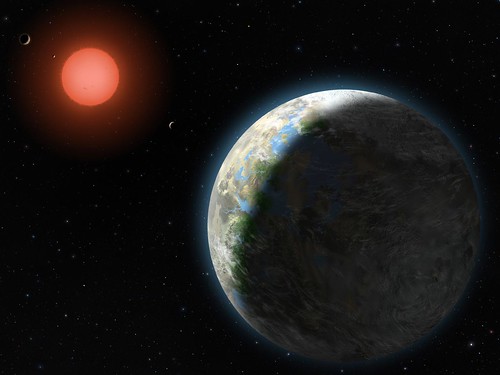Awesomeness Round-up – 10/4/10
- By Sara Mitchell
- October 4, 2010
- Comments Off on Awesomeness Round-up – 10/4/10

Credit: OPTIMUS PRIME image courtesy Hasbro
Transformers, roll out! This NASA news headline caught our eye last week: NASA and OPTIMUS PRIME Collaborate to Educate Youth. NASA announced a video contest for students from third to eighth grade that will feature spinoffs from NASA technologies. There have been some pretty amazing spinoffs over the years – I’m especially fond of the tiny space pens that write anywhere. I can vouch for their underwater capabilities, though it’s more useful that they can write on a greasy napkin when you’re scrawling out evil genius ideas.
This spectacular visualization shows how our solar system might look to alien astronomers – and how that view would have changed over time. It’s so strange to look at our neighborhood from the outside instead of the inside. It’s a viewpoint that’s wholly unfamiliar to us. But it’s also a little humbling to know that we’d just look like another dusty little planetary system to anyone who came looking.
This was some of the biggest space news last week – researchers using the Keck Observatory in Hawaii announced the discovery of an exoplanet with three times the mass of Earth orbiting within its parent star’s “habitable zone.” Dubbed Gliese 581g (don’t you love exoplanet names?), its orbital year would be just under 37 days. It’s probably a rocky planet with a definite surface and enough gravity to have an atmosphere. It’s also 20 light years away… so don’t make any vacation plans until we invent that warp drive.
In other exoplanet news, there’s been an interesting update to last year’s discovery of GJ 758 B, which astronomers thought was a large planet (10-40 times the size of Jupiter) orbiting a Sun-like star. But newer research shows that perhaps it’s actually a brown dwarf and not a planet at all. Geeked on Goddard looked into the story, and got into a much deeper discussion about the nature of scientific evidence and its interpretation.
Physicists have observed Hawking radiation in a laboratory black hole analog. Using non-linear materials and ultrashort laser pulses, the physicists created an event horizon, much like the one that occurs near a black hole. They were able to observe radiation created by the event horizon, just as Stephen Hawking predicted would happen at the event horizon of a black hole. Hawking radiation is an effect that brings together the Einstein’s classical theory of gravity and quantum field theory, so it’s especially interesting to physicists searching for a quantum theory of gravity; however, the radiation from black holes left by dead stars or in the center of galaxies can’t be seen from earth to verify that the predicted effect is real, which is what makes this laboratory experiment so exciting.
And finally, we were intrigued by the story of a new Las Vegas hotel with architecture that creates a “death ray” in a certain area near the swimming pool. Apparently, the Vdara hotel prefers to call it a “solar convergence phenomenon,” since it’s caused by the focusing of the Sun’s rays off the hotel. And it’s actually a tricky situation to solve, since the movement of the Earth will change the target of the light with the change of the seasons. A couple of us will be in Vegas in a couple of weeks, for the Blogworld & New Media Expo, and perhaps we can check out this poolside astronomical issue firsthand. For science, of course!



